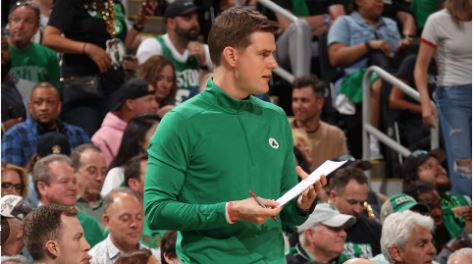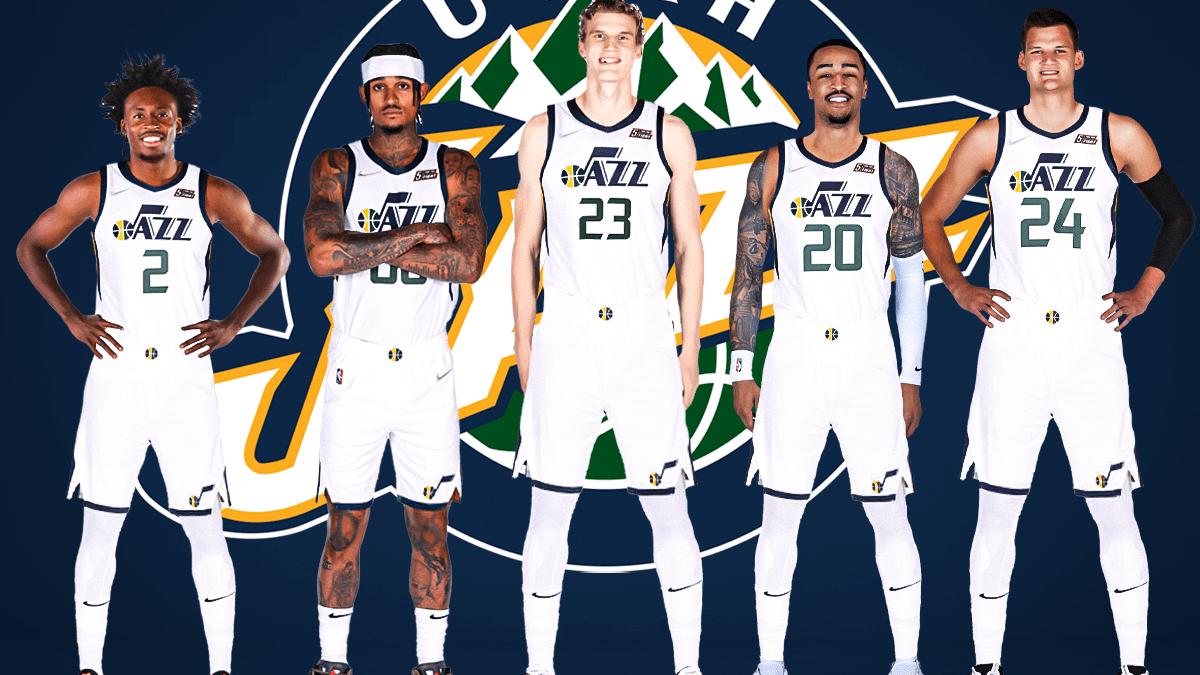
With the team’s summer league completed, let’s look at who’s ready to contribute and who isn’t. It was hardly ESPN’s best moment.
During a Utah Jazz summer league game last week, the Worldwide Leader in Sports displayed a projected depth chart, some of which left Jazz fans perplexed. It’s unclear why ESPN producers believed Lauri Markkanen would play centre next season, relegating Walker Kessler to the bench, or why John Collins was named one of the team’s starting three. He would have been surprised to learn that Brice Sensabaugh was the team’s backup power forward, and the absence of free-agent signee Drew Eubanks was also a major oversight.
Nonetheless, the pandemonium raised some interesting issues about the team’s depth chart next season: Who is truly likely to play in those positions? Of course, moves might change all of this, but there’s a good chance the Jazz will start the season with this lineup as well. Let us look at the big questions.
Will the Jazz start Markkanen, Collins, and Kessler together again next season?
That was the intention heading into the 2023-24 season, however it was immediately abandoned owing to results. Lineups containing those three players on the field were outscored by a staggering
Last season, they averaged 17 points per 100 possessions. Meanwhile, the Jazz’s strongest combinations featured Markkanen at power forward, Collins or Kessler at centre, and a more traditional wing at small forward. That being said, half of the unfavourable Markkanen/Collins/Kessler sample size came with Talen Horton-Tucker at point guard; perhaps his departure, combined with Collins’ increased familiarity, will lead to improved outcomes.
Last year, Jazz coach Will Hardy refused to cross the rotational experimentation line by benching Collins. Will he try it this year? We will see.
Which rookie will see the most playing time?
Given the rest of Utah’s rotation, Isaiah Collier’s spot as the team’s fourth guard (after Collin Sexton, Keyonte George, and Jordan Clarkson) appears to be secure. That normally translates to roughly 10 minutes per night, but that figure may be further constrained by the fact that George and Sexton can both play point guard.
What about everyone else? There are actual questions. The Jazz’s roster still lacks a real small forward who can play a key role. In theory, Sensabaugh, Cody Williams, or Taylor Hendricks could all start in that position. Sensabaugh is the best shooter of the three, Hendricks is arguably the best defender, and Williams is most likely the team’s offensive connection. But those minutes may easily
be squeezed by the Jazz’s decision to play big.Kyle Filipowski also has an apparent role to play as a combo 4/5 — it’s worth noting how many times assistant coach Sean Sheldon has described him as a Kelly Olynyk-like hub out there. If he is prepared, he may be able to land the position sooner. If not, the G League may be in the cards.
What to do with three sixths of the men? Sexton, George, and Clarkson are currently extremely similar player archetypes. All three excel at scoring, yet all three are terrible defenders due to their size and inconsistent effort. Their passing abilities are strikingly similar: Sexton averaged 6.6 assists per 36 minutes last year, while George and Clarkson both averaged 5.9 per 36 minutes. Sexton was also the most efficient of the three, but none of them were extremely efficient. Their effective field goal percentages were 12th, 15th, and 17th among Jazz players who played minutes last season.
In an ideal world, these are classic NBA sixth men: high-usage guys who can keep an NBA bench unit running but lack the other abilities required to be ball-in-hand starting stars.
Sexton was definitely the finest of the three last season. However, George, who is only in his second year, still has opportunity for improvement. It probably makes sense to start with those two.
But, who should be called point guard? George was that player for the majority of the season, but Jazz CEO Danny Ainge stated after the season that he wasn’t sure whether he was a point guard or a shooting guard, and summer league play highlighted the same issues.
Clarkson, however, needs a rebound season after struggling with efficiency last year. As of now, no other NBA clubs have expressed interest in trading for his services. With the roster as it is, here’s what I would do:
Starters include Keyonte George, Collin Sexton, Cody Williams, Lauri Markkanen, and Walker Kessler.
The rotational bench includes Isaiah Collier, Jordan Clarkson, Taylor Hendricks, John Collins, and Drew Eubanks. Bit players include Johnny Juzang, Darius Bazley, Brice Sensabaugh, Kyle Filipowski, and Kenneth Lofton, Jr.
Starting Cody Williams straight away is a risky choice, but it symbolises where the Jazz stand as a team. Clearly, the team must risk on upside, and Williams has it. He also appears to have the skills to fit in as an attacking connector.
slasher right away without removing too much space from the page, whereas Hendricks and Sensabaugh may struggle with ball movement and defensive emphasis.Starting this lineup also provides George with the best surrounding cast to grow with, as well as Kessler with many men to provide lobs, rim protection, and rebounding in the frontcourt.
The bench is also made up of both young players and veterans. Collier can try to play point guard in the NBA, but he can also hand over the ball to Clarkson if the pressure becomes too much. Meanwhile, Eubanks adds toughness and rebounding to the bench lineup that Filipowski may not provide. To be sure, effective spacing is a challenge with this roster, with question marks on shooting abilities for everyone. them. Depending on who shoots well and who doesn’t, Juzang, Sensabaugh, or Filipowski may be called into the rotation. Meanwhile, the bench players might compete for positions. I’d expect to see at least a couple of these guys in the G League to begin the season, being called up in the event of an injury or outstanding play to challenge the rotation for minutes.
Leave a Reply